 Be Inspired Blog - Arizona
Be Inspired Blog - Arizona
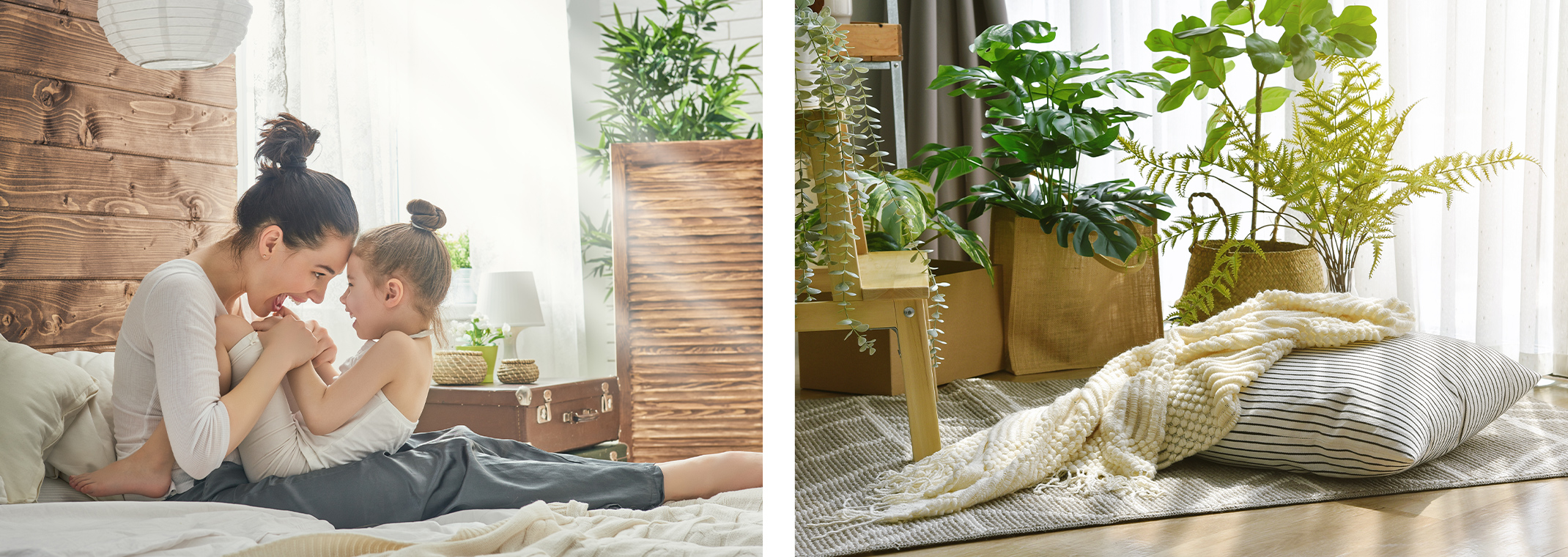
Summer Heat: How to Retreat with Houseplants
When things heat up in the Valley of the Sun and that means hot, hot temperatures. Before it gets too hot, it’s time to start thinking about creating a calm, cool and relaxing retreat from the heat indoors. One of the best ways to escape high temperatures is to sit among fresh houseplants. Keep reading for tips on how to create a hideout from the heat and top plants for hot summer days.
Indoor Retreat from the Heat: What You Need
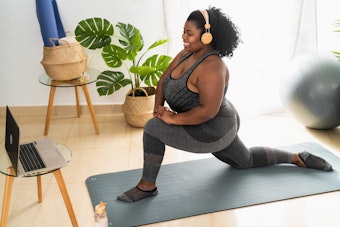 Once you get inside your home, you want to come down from the heat and relax. While it may be too hot for you to garden, you can still enjoy houseplants and flowers.
Once you get inside your home, you want to come down from the heat and relax. While it may be too hot for you to garden, you can still enjoy houseplants and flowers.
One of the best ways to do this is to create a sanctuary in your home. How can you do this? Keep reading for our recommended items you need for a relaxing botanical getaway in your own home.
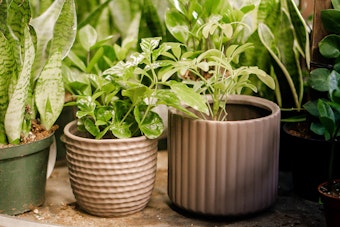
Selecting Pots for Houseplants
When you buy new houseplants, do you keep them in the plastic containers they come in or transfer them to new pots?
At SummerWinds Nursery, we recommend that you transplant any overgrown plants into new containers that are 1-2 inches larger than the container they have outgrown. In addition to looking out of proportion in a container that's too small, plants that have outgrown their containers become rootbound, can topple over, and grow poorly because there is not enough soil for the plant. As a result, the plant will dry out faster and not receive the water and nutrients it needs for healthy growth. Conversely, if you place a plant in a pot that is larger than the recommended 1-2 inches larger than its existing pot, the soil will stay too moist because the roots have not yet expanded/grown in order to be able to absorb all the moisture being held by the excess soil needed to fill the larger pot. This is also be detrimental to your plant's health and growth.
Along with sizing, it’s important to consider drainage holes! Pick a container that has plenty of holes in the bottom that allow excess water to get out. This is crucial because if water sits at the bottom of the pot, it can cause root rot and kill the plant. When size allows, we recommend watering your plant at the sink (be certain to use a sink waste catcher to ensure any loose soil or plant debris doesn't go down the drain). After you water the plant—using water that is neither hot nor cold, wait for the excess water to drain out into the sink. Once it has stopped dripping into the sink, simply place the plant onto a plant saucer that is under the pot so that it can collect any water runoff. This will help protect your furniture and your flooring. If your plant is large and cannot be watered in your sink, make sure that you don't over water it. Experiment so that you use the right amount of water so the plant receives the water it needs without having excess water in the plant saucer. Check back several minutes after watering to ensure you don't have any water in the plant saucer. If you do, we recommend that you immediately drain the saucer of any excess water so that it does not cause root rot or get reabsorbed by the plant unnecessarily.
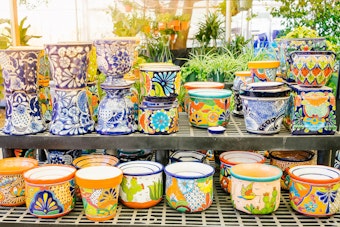
If you do choose a decorative container, pay attention to the bottom of the pot; it may or may not have drainage holes. We recommend using a pot that has drainage holes whenever possible. If the pot you want to use doesn’t have drainage holes, be careful to know how much water your plant needs and give it the correct amount so it is not overwatered.
Talavera Pottery
If you are looking for a gorgeous, bright and colorful pot for your houseplants or even stunning decorations, Talavera pottery is the way to go. Stop by your local SummerWinds Nursery for garden balls, planters, wall hangers and more.
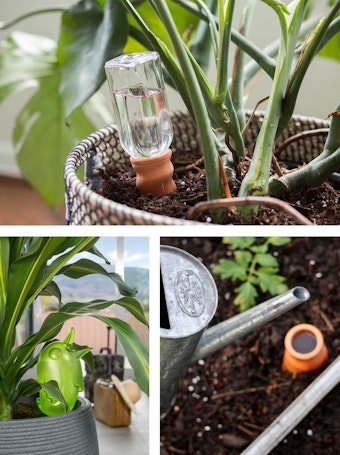
Watering Aides
Could you use a little help keeping your indoor plants healthy? There are many wonderful products that are designed to help plant owners keep their indoor garden healthy and thriving. Some of our favorites are:
-
Never Dry Plant Pal™ by Syndicate
– uses a recycled glass bottle filled with water to help control soil hydration. The dry soil conveniently soaks up the water without the fear of overwatering. -
Scheurich Bordy Water Reserves
– Fill the "bordy" with water through it's beak/mouth. The reserve slowly releases water into dry soil through its clay pointed end for up to four days. -
Ollas
– If your houseplant is large enough, you can use an Ollas pot. The Ollas is buried in the soil, and then filled with water weekly. Water is slowly absorbed by the plant's roots through the terracotta, producing a water savings of up to 70%.
Stop by your local SummerWinds Nursery to explore the wonderful watering aides we have! Plus, they're especially helpful when you want to go on vacation.
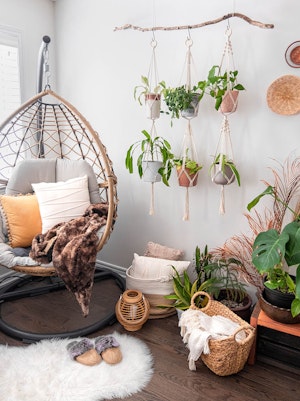
Macramé Plant Hangers
Macramé is the art of knotting way, which has become stylish way to hang houseplants! If you lean towards boho-chic, this is a perfect look for you; stop by your SummerWinds Nursery to pick up this fun and stylish plant hanger for your own indoor garden retreat.
Spray Bottles
When it gets too hot, don’t use your spray bottle on you more than your plants! Some plants prefer a little extra humidity, which is where spray bottles come in. To add humidity to houseplants, HGTV recommends, “Add moisture by grouping plants together, or putting them on top of pebbles in trays or saucers filled with a little water (don’t let the pots touch the water so the roots don’t stay constantly wet). You can also mist your plants or even add a humidifier.”
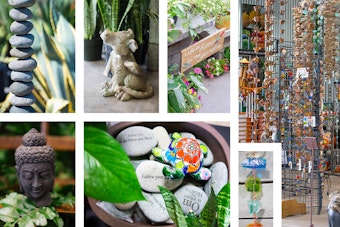
Sculptures
Including sculptures and figurines is a wonderful way to personalize your area to exactly your needs and tastes. Do you love garden gnomes or cats and butterflies? Whatever you prefer, add it to your indoor summer sanctuary for a fun and pleasing environment.
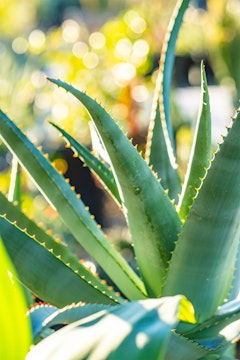
Houseplants that Cool Your Home
Along with your AC unit, the plants you have in your retreat area can cool your home. Here’s a great list of houseplants from PopSugar than can keep you and your house cool.
1. Aloe Vera
Along with being a great aid in treating sunburns, Aloe Vera plants purify the air and emit oxygen, which helps to cool the indoor temperature of the air.
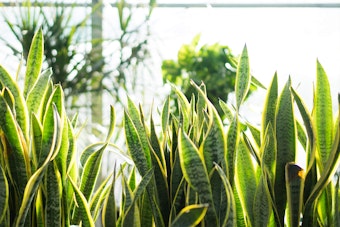
2. Snake Plant
Also known as a Sansevieria, this plant is great to help you sleep at night (even more about these plants below) because it emits oxygen at night; it cools the air while you sleep.
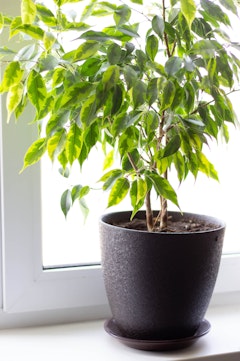
3. Ficus
This classic houseplant increases oxygen levels in the air, which cools the temperature in your home.
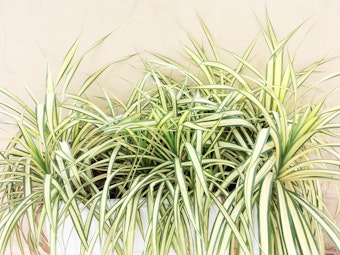
4. Spider Plant
Another traditional houseplant, this one purifies the air and cools it at the same time.
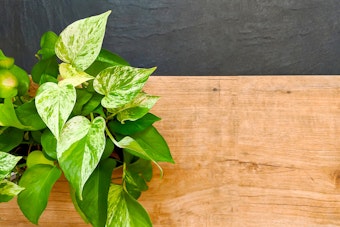
5. Pothos
Also known as the Money Plant, Pothos removes formaldehyde in the air and is hard to kill; it’s great for gardening beginners.
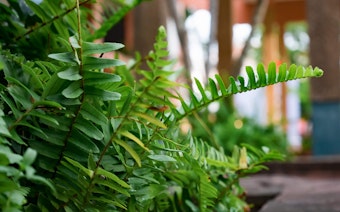
6. Kimberly Queen Fern
Also known as the Australian Sword Fern, this plant is a natural air humidifier and purifier. It is also known for efficiently removing xylene and formaldehyde from the air.
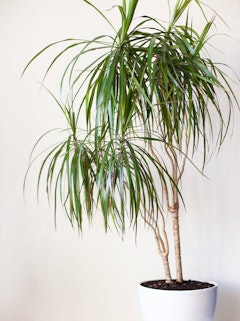
7. Dracaena
This low-maintenance houseplant is an all-star at purifying the air and can even help increase humidity levels in your home.
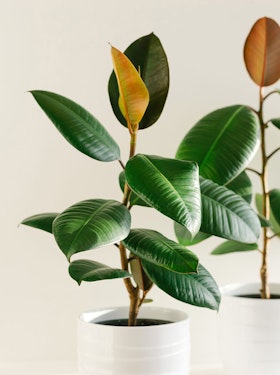
8. Rubber Plant
No matter the size of your home, a rubber plant makes a significance difference in air quality. According to PopSugar, “It releases high levels of oxygen, helping to cool the ambient air temperature, and excels at purifying toxins such as formaldehyde from the air.”
Houseplants to Help You Sleep
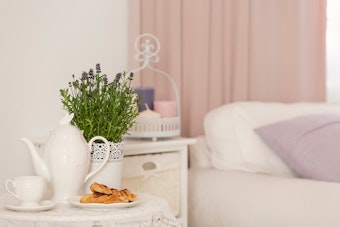
Many of us have trouble sleeping when it’s hot; it’s nearly impossible to get comfortable when you’re too hot and tossing and turning. Check out this list of plants that can help you drift off via Proflowers.
1. Lavender
This plant is famous for helping people to relax and reduce stress and anxiety; lavender can also induce sleep. Don’t forget, it has a calming smell, too.
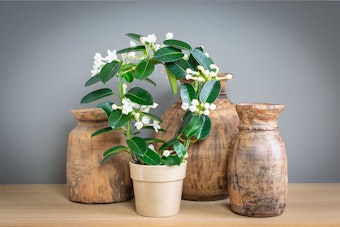
2. Jasmine
As Nursing Times notes, “researchers found that the scent of jasmine is as effective as Valium and similar drugs for relieving anxiety and promoting sleep.” We’ll keep this next to our bed!
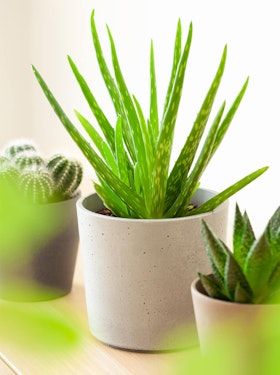
3. Aloe Vera
Aloe vera makes its way in this post twice! If you’re sensitive to chemicals from cleaning products, this plant purifies the air, leading to a peaceful sleep.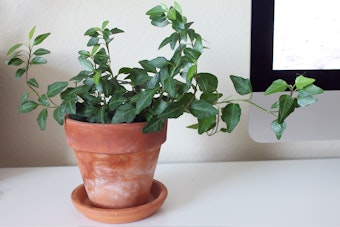
4. English Ivy
Don’t let the heat or even mold stop you from getting a good night’s sleep. English Ivy helps remove the mold in the air, which can lead to better sleep.
Other Houseplants with Fun Shapes
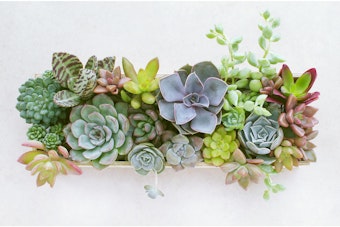
Succulents
Succulents are perfect for your summer retreat because they need little water! Make sure you don’t over water them; only give them a drink when the soil is completely dry.
There are all sorts of fun things you can do with succulents; check out our recommendations here!
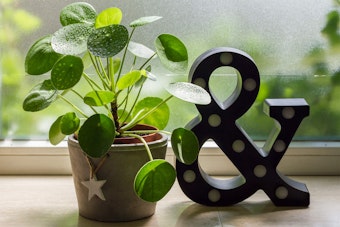
Chinese Money Houseplant
This popular plant has fun, disc-shaped leaves to add some flair to your space.
Learn more about the Chinese Money Plant, here.
Houseplants and Air Conditioners
When you’re escaping from the heat, you’re likely setting up your relaxing area as close to your air conditioner as possible. While this may be good for you, it can be harmful, even deadly to your houseplants. As COOLRAY notes:
Cold temperatures can freeze the cells in a plant, which blocks the natural pathways for water and nutrients. Basically, cold temperatures cause plants to starve. If the color of your plant’s leaves is fading or if the leaves are wilting, it could be because the plant is too close to an air conditioning vent. Cold air blowing directly on plants often strips it of its moisture.
Keep an eye on your houseplants and move them away from the cold air as needed.
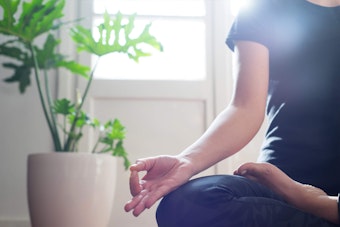
Creating a Summer Retreat with Houseplants
Before summer hits and the temperatures really rise, now is the time to create your sanctuary. Head to your local SummerWinds Nursery to get all the houseplants and accessories you need for your retreat. How will you relax?

